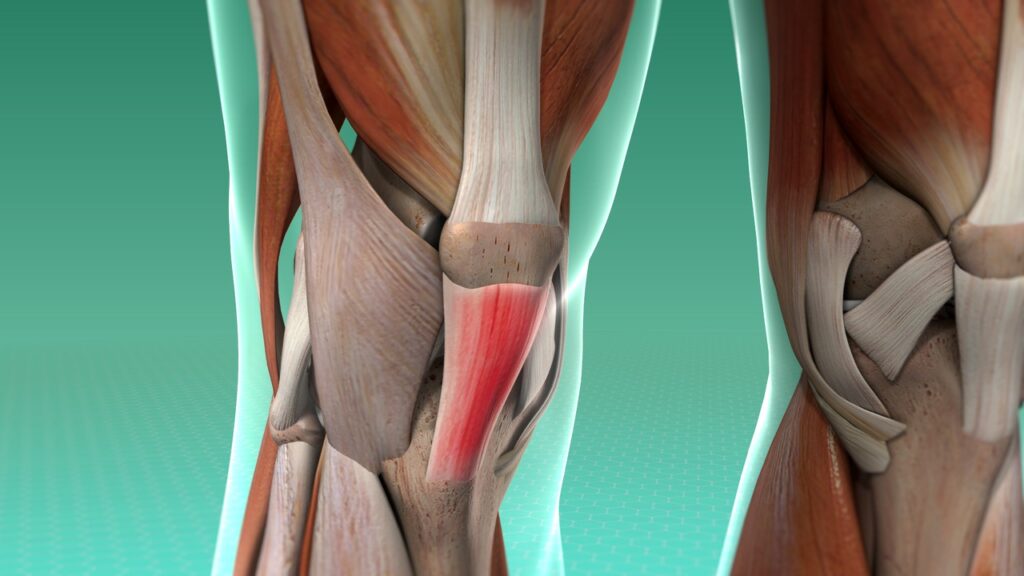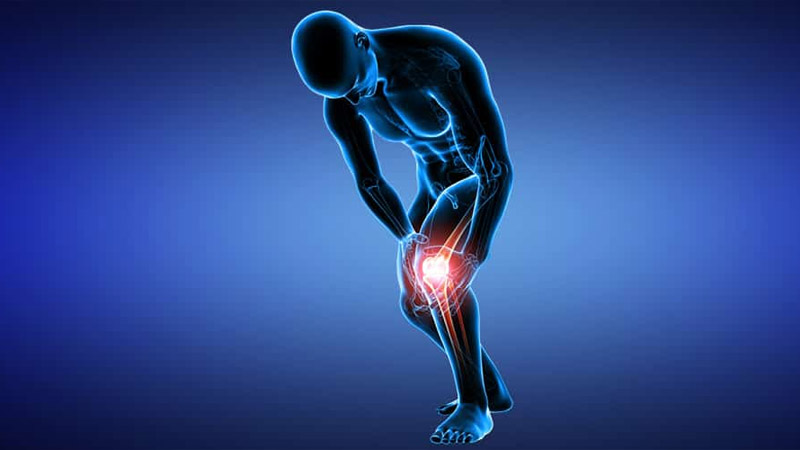Patellar Tendonitis

Are you experiencing pain in your knee? You may have patellar tendonitis, a condition that is common among athletes. This guide will provide you with everything you need to know about patellar tendonitis, including its causes, symptoms, and treatment options.
What is Patellar Tendonitis?
Patellar tendonitis is a condition that results when the patellar tendon, which connects the kneecap to the shinbone, becomes irritated and inflamed. This condition is also sometimes called “jumper’s knee.”
Patellar tendonitis is a common knee injury, particularly in athletes who participate in jumping sports such as basketball, volleyball, and track and field. The repeated stress of jumping can lead to the overuse of the patellar tendon, resulting in inflammation.
Patellar tendonitis typically causes pain around the kneecap, where the patellar tendon attaches to the bone. The pain may be worse with activity, such as walking or stair climbing, and may be aggravated by sitting for long periods of time with the knees bent.

Causes of Patellar Tendonitis
There are many potential causes of patellar tendonitis. Some of the more common causes include:
Overuse:
Patellar tendonitis is a common overuse injury as the patellar tendon is simply not designed to withstand the repetitive stress that comes with activities like running, jumping, and basketball.
Poor biomechanics:
If your biomechanics are not ideal (e.g., you have flat feet), this can put extra strain on the patellar tendon and lead to inflammation.
Muscle imbalance:
If the muscles around your knee are imbalanced (e.g., your quads are much stronger than your hamstrings), this can also lead to patellar tendonitis.
Arthritis:
This is a common cause of patellar tendonitis in older adults.
Injury:
A direct blow to the knee or a sudden increase in activity can sometimes lead to patellar tendonitis.
Symptoms of Patellar Tendonitis
There are a few symptoms that are associated with a patellar tendon tear. These include:
-Pain in the front of the knee, just below the kneecap
-Swelling and tenderness around the kneecap
-Stiffness in the knee
-Difficulty straightening the leg
-Crackling or popping sounds when moving the knee
-Weakness in the leg muscles
If you are experiencing any of these symptoms, it is important to see a doctor or orthopedic specialist to get jumper’s knee diagnosed.
Diagnosis of Patellar Tendinitis
To diagnose patellar tendonitis (jumper’s knee), your doctor will ask about your medical history and give you a physical exam. He or she may also order imaging tests, such as X-rays, an MRI, or a CT scan.
If you have patellar symptoms, your doctor will first want to rule out other conditions that could be causing your pain, such as:
-Arthritis
-Bursitis
-Tendonitis
-Fracture
Patellar tendinopathy (tendonosis) is a similar condition, but refers to a degenerative process rather than inflammation. Once other conditions have been ruled out, your doctor will likely diagnose you with patellofemoral pain syndrome (PFPS). PFPS is a condition that affects the way your kneecap moves.
This can cause pain in your knee, especially when you walk up and down stairs or sit for long periods of time.

Treatment for Patellar Tendonitis
You may need to take a break from activities that put stress on your knees, such as running or playing sports.
Once you diagnose jumper’s knee, the next step is to get it treated. There are multiple treatment options available for patellar tendonitis. The most important part to get a jumper’s knee treated is rest. This will help to reduce the inflammation and allow the injury to heal.
Ice can also help reduce pain and swelling. Apply ice for 20-30 minutes, 3-4 times per day.
In some cases, your doctor may recommend physical therapy. Physical therapy can help to improve flexibility and strength in the knee joint. This can help to reduce the amount of stress on the patellar tendon and prevent further injury. A knee brace can also be helpful in treating patellar tendonitis.
Surgery is rarely necessary for patellar tendonitis. However, in severe cases where other treatments have not been successful, surgery may be recommended to remove the damaged tissue.
Recovery from patellar tendonitis can take several weeks or months. It is important to follow your doctor’s instructions and take care of your knee during this time. With proper treatment, most people can make a full recovery.
Tips to prevent Patellar Tendonitis
Following are some tips that may help you avoid patellar tendonitis:
- Avoid activities that put stress on your knees, such as running or jumping.
- If you must do these activities, be sure to warm up and stretch first.
- Wear proper shoes that support your feet and knees.
- Strengthen the muscles around your knees with exercises such as squats and leg lifts.
- Apply ice to your knees after any activity that causes pain.
- Rest your knees as much as possible when you are experiencing patellar tendon swelling pain.
- See a doctor if the pain does not go away or gets worse.
Exercises to keep your knee in top shape and avoid patellar tendonitis
There are many different ways you can keep your knee in good shape and avoid patellar tendonitis. You should always consult with your doctor or physical therapist to find the best exercises for you, but here are some general tips:
– Strengthen the muscles around your knee. This will help support your joint and take some of the strain off of your patellar tendon.
– Stretch your quadriceps and hamstrings. This will help keep your muscles flexible and prevent them from putting too much strain on your knee.
– Avoid high-impact activities. Running or jumping can put a lot of strain on your patellar tendon. If you must do these activities, be sure to warm up properly and take breaks often.
– Use proper footwear. Wearing shoes that don’t fit well or support your feet can put a strain on your knees. Be sure to wear shoes that are comfortable and provide good support.
Following these tips can help you avoid tiny tears and keep your knee in good shape. However, if you do experience knee pain or swelling , be sure to see your doctor to get proper treatment.
Exercises to strengthen your knee
1. Hamstring curls:
Lie on your back with a weight in your hand and your knee bent. Slowly straighten your leg and then curl it back towards your body. Repeat this motion for 10-15 repetitions.
2. Leg lifts:
Lie on your side with your legs straight. Slowly lift one leg up and then lower it back down. Repeat this motion for 10-15 repetitions before switching to the other leg.
3. Squats:
Stand with your feet shoulder-width apart and your knees bent. Slowly lower yourself down into a squatting position and then stand back up again. Repeat this motion for 10-15 repetitions.
4. Lunges:
Stand with one leg in front of the other and your knees bent. Slowly lower yourself down into a lunge position and then stand back up again. Repeat this motion for 10-15 repetitions before switching to the other leg.
5. Step-ups:
Stand in front of a step or platform and place your foot on it. Use your leg muscles to lift your body up onto the step and then lower yourself back down again. Repeat this motion for 10-15 repetitions before switching to the other leg.
6. Leg presses:
Sit in a chair with your legs bent and weight in your hand. Straighten your legs and then bend them back towards your body. Repeat this motion for 10-15 repetitions.
7. Calf raises:
Stand with your feet shoulder-width apart and your knees bent. Use your leg muscles to raise your body up onto your toes and then lower yourself back down again. Repeat this motion for 10-15 repetitions.
3 Ways to Level Up Your Rehab and Injury Prevention With Us




